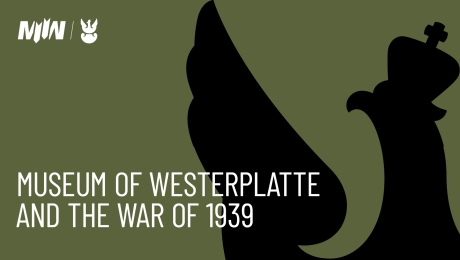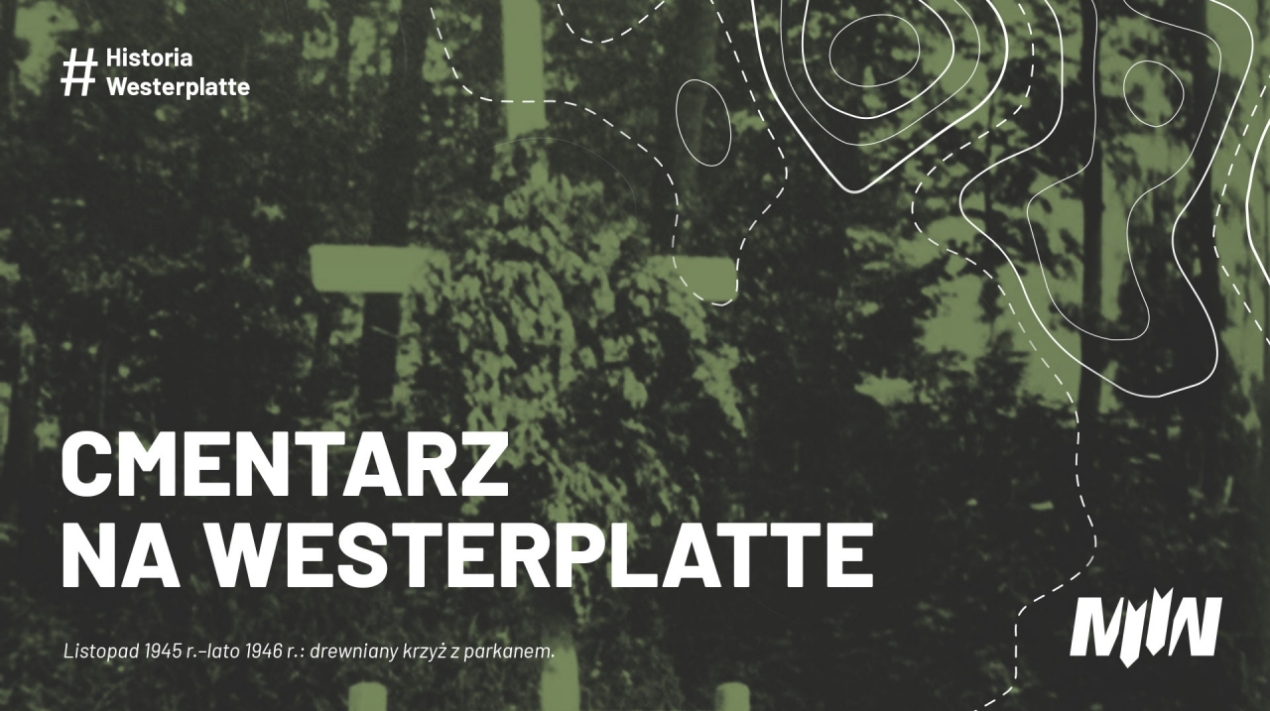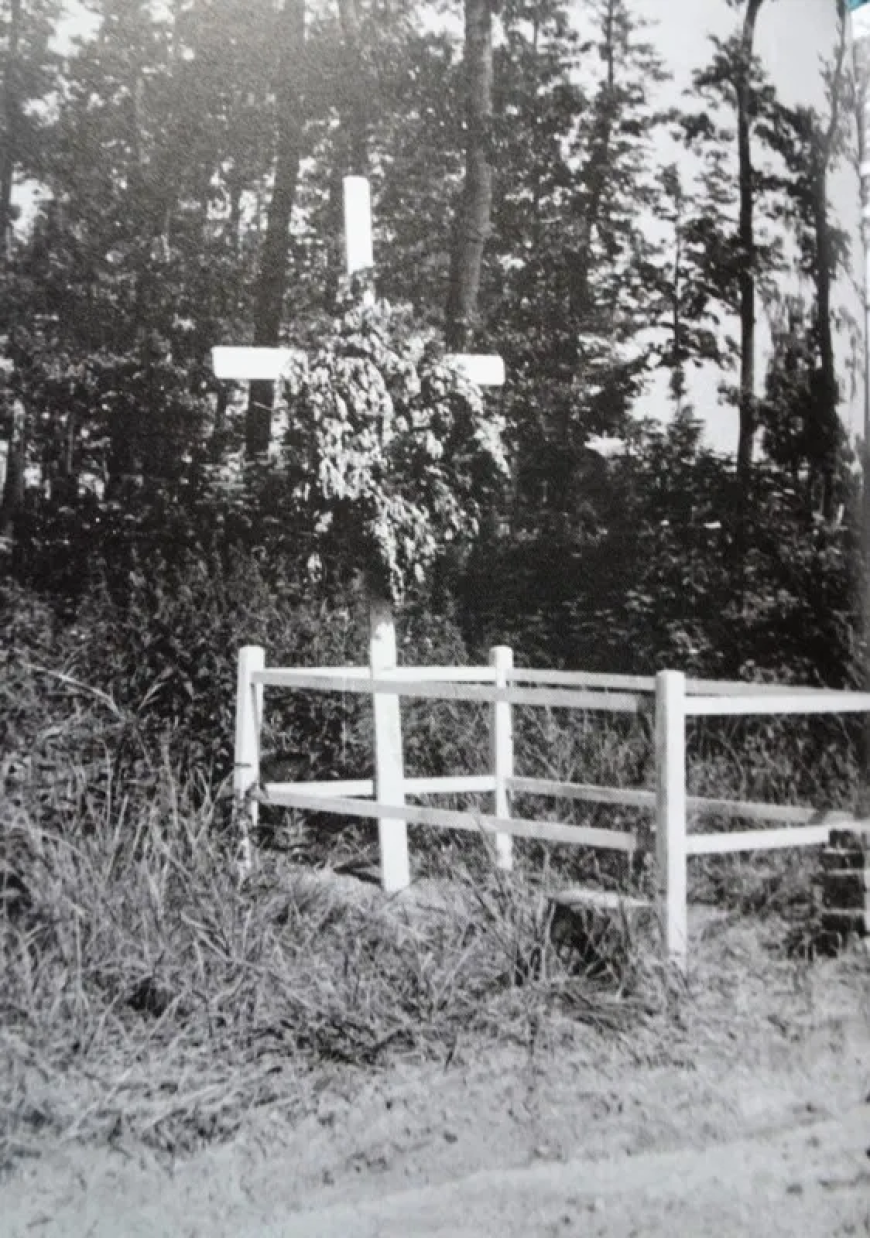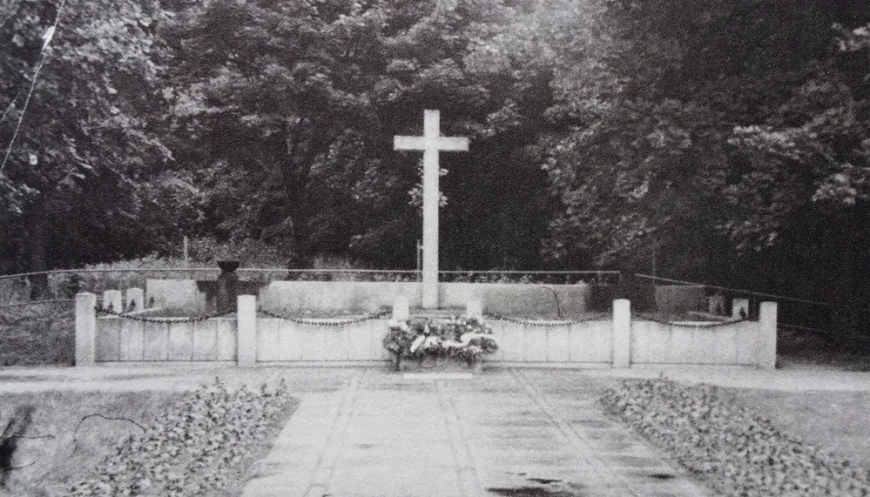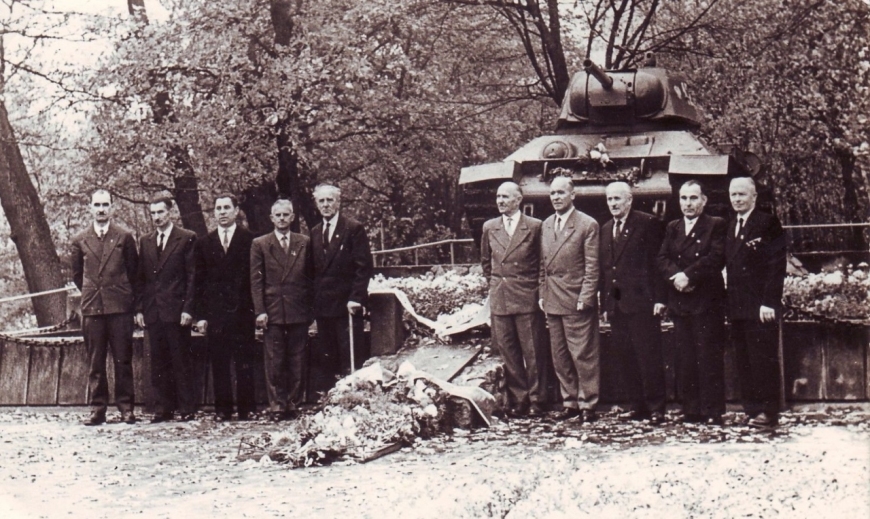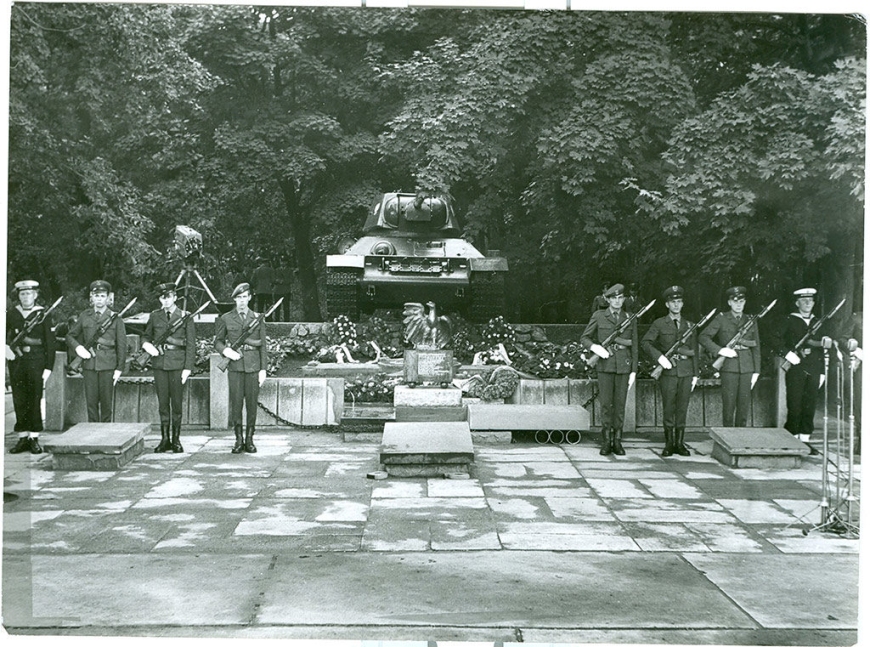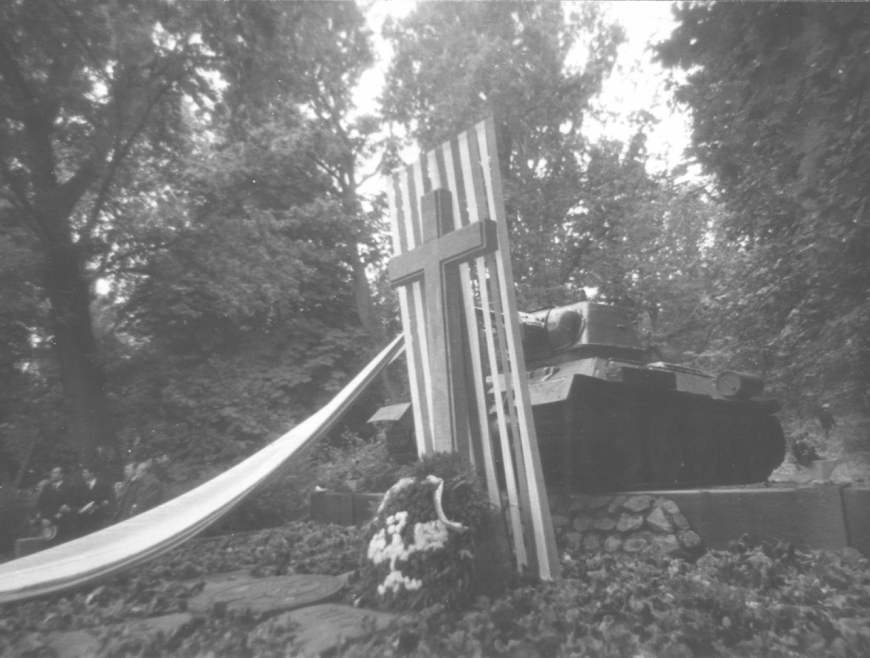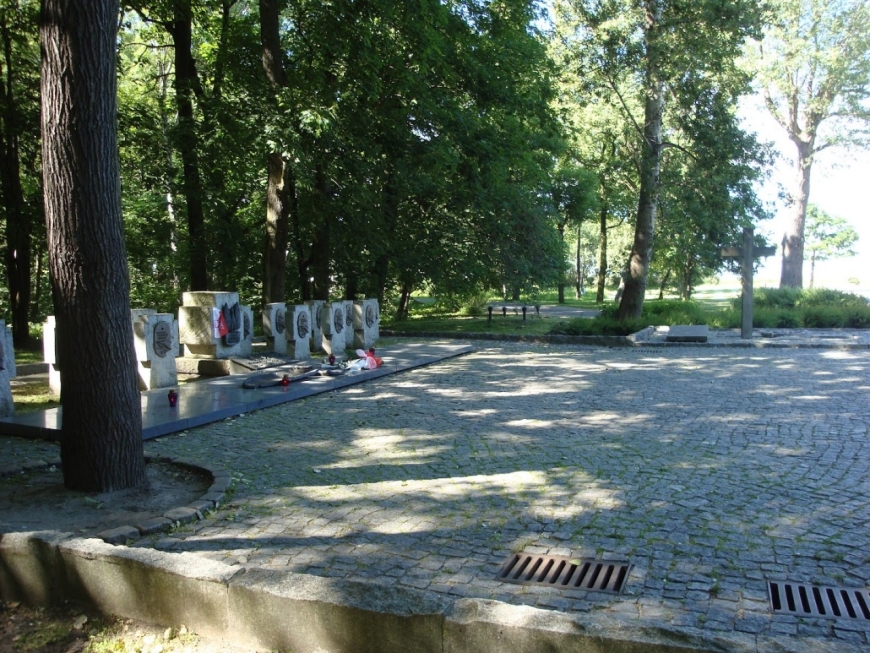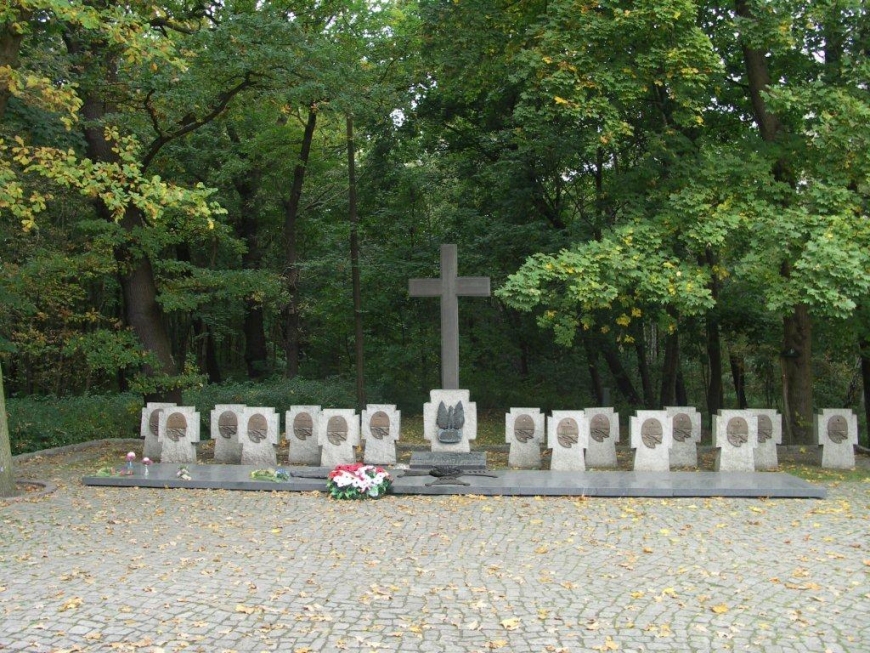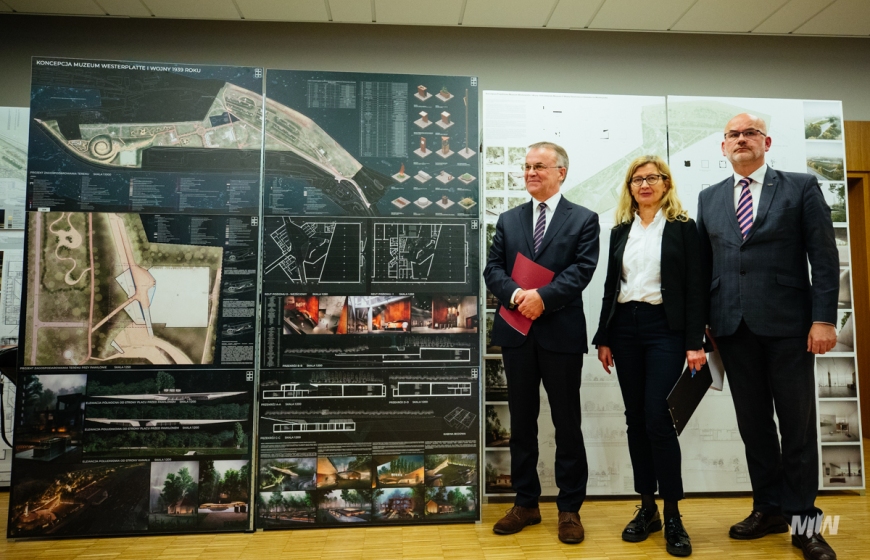#WesterplatteHistory - WESTERPLATTE CEMETERY
In December 2020, an international architectural competition was held for a new cemetery design on Westerplatte. In the coming years, all of the identified fallen defenders of the Polish Military Transit Depot from September 1939 will be buried there. This is a good moment to recall the history of this most significant point on the Westerplatte Peninsula. The new design and modernization of the visitor's path will undoubtedly restore the proper dignity to this place and emphasize the seriousness of the land sanctified by the blood of Polish soldiers. However, let's start from the beginning.
We invite you to familiarize yourself with the text and rich iconography depicting the history of another point on the map of Westerplatte.
The Cemetery of Polish Soldiers on Westerplatte was erected on the site of the destroyed Guardhouse No. 5 on September 2nd, 1939. The date of its establishment and the opening of the entire complex is considered to be July 22nd, 1946 - a day chosen by the authorities at that time not by chance. However, already in November 1945, the first ceremony commemorating the defenders of Westerplatte took place at the future cemetery site. The fallen were solemnly honored at the first temporary form of the cemetery - a wooden cross surrounded by a low fence, which was set up in late autumn 1945. In less than a year, this gave way to a more imposing monument that remained on Westerplatte for over 40 years. The grave-memorial, as it was called by contemporaries at that time, was enriched with characteristic funeral elements. The most visible form was a tall cross, representing a clear religious symbol - significant for the living, but also emphasizing the faith of the fallen Westerplatte defenders. In the following years, it was colloquially called the Dąbrowski Cross. The second prominently distinguishing element was a large-scale replica of the Virtuti Militari Cross, cast in concrete and adorned with metal elements, placed in the central part of the monument. It was intended to symbolize the awarding of this highest military decoration to all of the fallen defenders of the Military Transit Depot on Westerplatte.
Efforts to commemorate the fallen were initiated as early as 1945 by the former captain (then Lieutenant Commander) Franciszek Dąbrowski, an officer of the Naval Reserve. The activities related to the construction of the cemetery gained momentum in the spring of 1946, especially after the establishment of the Westerplatte Defenders' Association, which brought together the surviving Westerplatte defenders, mainly from the Coast. However, convincing the state authorities to create the cemetery and monument was a challenge. Former officers of the Westerplatte permanent garrison played a part in this. Engineers and technicians from the Port Reconstruction Office assisted in the project and concept. Ultimately, the monument was built, and the entire environment was organized through the work of volunteers and sailors delegated for this purpose. The eastern edge of the symbolic grave was erected above the western wall of the destroyed Guardhouse No. 5, which had been demolished several years earlier. Importantly, in 1945, the area bore no resemblance to the place remembered from the 1939 battles - almost all of the characteristic landscape elements that helped with orientation had been completely transformed. The cemetery, and consequently the entire complex with access to the monument, practically occupied the entire surface of the original location of the guardhouse. This location was intentionally chosen because of the fallen defenders of this post. Most likely, there was no awareness of the work of Polish prisoners who had exhumed all those buried in the guardhouse and buried them nearby the demolished object. Interestingly, there is no information that the authorities of that time decided to carry out any searches or exhumations. Probably, the entire surrounding area was treated as a cemetery, and it was decided not to make any major interventions in the soil. The most interesting element of the initial decoration of the cemetery was the plaque (changed several times in subsequent years) with the names of the fallen defenders. The first list, compiled according to incomplete, contemporary knowledge, included only the names and military ranks in the Navy. In the mid-1950s, this part of the complex was rebuilt, moving the plaque with the improved details of the defenders to the central part of the monument. This created a larger space to the east. It served as a square where ceremonies, appeals, and anniversary meetings were organized in the following years. With each passing anniversary of the outbreak of World War II, additional plaques and informational elements were added, including information about the soil collected from places of resistance and the martyrdom of the Polish nation.
In 1962, most likely in order to allegedly give even higher status to this place and emphasize Polish-Soviet friendship before the planned, ultimately unsuccessful visit of the First Secretary of the USSR, Nikita Khrushchev, the authorities decided to remove the Dąbrowski Cross and place a Soviet T-34 tank on the mound above the cemetery. These actions were part of the ongoing campaign at that time against any religious symbols in the country. Originally, the cross was supposed to be removed and destroyed, but thanks to the efforts of local activists, it was saved and secretly placed in the cemetery in Nowy Port. On September 1st, 1966, on the occasion of the millennium of Poland's existence, 12 urns with soil from battlefields sanctified by the blood of Polish soldiers were placed in the cemetery.
The most significant event took place on September 1st, 1971. It was then that the remains of Major Henryk Sucharski, brought from Italy, were laid to rest on Westerplatte. Large, nationwide ceremonies attracted around 10,000 participants to the peninsula, eager to take part in this extraordinary event. It was another such significant ceremony, similar - as the contemporary newspapers emphasized - to the one that took place two years earlier during the ceremony of bringing the remains of another great commander of the defensive war of 1939, General Franciszek Kleeberg, to Poland. Importantly, the events of September 1971 also aimed to erase painful memories related to the recent events of December 1970 on the Coast - although the authorities did not admit to this. After the ceremonies held at the foot of the Defenders of the Coast monument, the coffin, decorated with orders, was moved and deposited in a specially prepared niche in front of the monument-mausoleum of the fallen Westerplatte defenders. Thus, the last commander of the Military Transit Depot was laid to rest on the peninsula. Over the burial niche, a specially prepared urn-sculpture with a stylized eagle was placed - to which, however, the remains of Major Sucharski could not ultimately be deposited. From that moment on, the cemetery on Westerplatte was not just a symbolic burial place. Thanks to the efforts of many people, Major Sucharski's last will was finally fulfilled - to have his mortal remains placed on Polish soil.
For almost the next 10 years, on Westerplatte and around the cemetery, seemingly nothing new happened. It wasn't until October 1980 that the Workers' Committee of "Solidarity" of the Port of Gdańsk petitioned for the restoration of the so-called Dąbrowski Cross on Westerplatte. This was the most important element for emphasizing the religious character of this place, while being associated with the spreading, grassroots movement of "Solidarity." The appropriate occasion arose on August 31st, 1981 - on the first anniversary of the signing of the August Agreements. The ceremonies were combined with the 30th anniversary of Major Sucharski's death on August 30th - whose remains had rested on Westerplatte for 10 years - and the approaching 42nd anniversary of the outbreak of World War II. These events were all the more joyful because the cross had been successfully restored in the last days of August. It stood above the grave and in front of the tank within the cemetery. Simultaneously, further talks were held to remove the tank itself from Westerplatte. However, the communist authorities did not want to allow that. The vehicle stood on the peninsula for several more years, becoming another of the various, inconsistent forms surrounding the cemetery. At the end of martial law, the communist authorities began efforts to change the image of the peninsula and planned to rebuild the cemetery itself. However, these actions lacked the necessary resources, and extensive changes remained only a proposal.
It wasn't until the summer of 1989, mainly thanks to pressure from veterans' organizations, that the tank was moved, and the cemetery was thoroughly redesigned, acquiring the known shape today. Only the approaching 50th anniversary of the outbreak of World War II forced the local authorities to revise their previous assumptions. Strangely, both crosses were moved, placed on the right side of the cemetery in a small annex prepared for them. The new cemetery gained 15 granite crosses, on which iron plates were placed, resembling Polish identity signs, with the personal details of the individual fallen defenders. After attempts of theft at the turn of the century, the metal elements were replaced with resin casts. In front of the crosses, a slab of black marble was laid, on which a smaller, stylized Virtuti Militari Cross and a composition imitating fragments with the inscription "Westerplatte defends itself" were mounted. In the central part, the 16th and largest cross was placed, crowning the complex and symbolizing Major Sucharski, who was buried next to it. Additionally, a plaque commemorating him and the deposit of his remains on September 1st, 1971, was placed. Until the exhumation on March 16th, 2021, by the Museum of the Second World War in Gdańsk, it was believed that next to Major Sucharski, the remains of Corporal Andrzej Kowalczyk were also buried, supposedly found during earthworks conducted on the Westerplatte peninsula in 1963, a few meters from Guardhouse No. 1. Allegedly recognized based on Polish equipment and a harmonica by the still living Westerplatte defenders. The recovered remains were buried at the Srebrzysko Central Cemetery in Gdańsk. On September 1st, 1992, the alleged remains of Corporal Andrzej Kowalczyk were moved and solemnly buried at the Westerplatte Defenders Cemetery. During the inspection of the exhumed remains, conducted during the excavations by the Museum of the Second World War in Gdańsk in 2021, it was determined that the deposited remains, supposedly belonging to Corporal Andrzej Kowalczyk, had typical German military equipment. Due to well-justified doubts about the identity of the exhumed soldier, a decision was made to conduct specialist genetic identification studies, as well as to initiate search activities for the Polish Westerplatte Defender.
Only in 2010, thanks to the efforts of the "Dignity" Association, did the Dąbrowski Cross return to its original central location. Although it was no longer as tall as it had been at the beginning, the cemetery's composition was completed - just as the Westerplatte defenders wished.
In the coming years, the cemetery will be redesigned and moved slightly to the area of the mass grave discovered in 2019, where most of the fallen Westerplatte defenders were buried 80 years earlier. The new design of the cemetery will properly honor the Polish heroes and emphasize the human dimension of the symbol that has grown around the battlefield on Westerplatte.
Successive phases of the Westerplatte Cemetery:
Photo 1: November 1945 - summer 1946: wooden cross with a fence. Author unknown (Museum of the Second World War)
Photo 2: July 1946 - summer 1962: cemetery-memorial. Author unknown (Museum of the Second World War)
Photo 3: Summer 1962 - August 1971: tank installed and Dąbrowski Cross removed. 10 Westerplatte defenders are visible in the commemorative photograph. Author unknown (Museum of the Second World War)
Photo 4: September 1, 1971 - August 1981: sculpture added and Major Sucharski's burial. Author unknown (public domain)
Photo 5: August 1981 - summer 1989: restoration of the Dąbrowski Cross between the monument and the tank. Author unknown (Museum of the Second World War - Czesław Nowak's deposit)
Photo 6: Summer 1989 - summer 2010: current form of the cemetery with the moved cross and plaques in the so-called annex. Author unknown (Museum of the Second World War)
Photo 7: Final form of the cemetery since the summer of 2010. Author unknown (Museum of the Second World War)











